What’s in a name?
For companies that want to succeed, the answer is — everything.
But branding is much more than just the name. A brand is the emotion and story behind a business that the company relays to its customers through everything it does.
The concept has become very prevalent in the last few decades and has expanded to employer branding and personal branding. The latter is particularly interesting — with more than half of the world online, everything you post under your name becomes part of your personal brand.
Let’s look into the most recent branding statistics to see what companies, employers, and individuals can do to build a strong reputation. Although the world is currently facing much bigger problems, branding is as important as ever in 2022.
Top Branding Statistics in 2024 (Editor’s Choice)
- It takes 5–7 interactions for people to remember a brand.
- 90% of consumers say authenticity is vital when choosing brands they like and support.
- Brand consistency can increase a company’s revenue by up to 33%.
- Apple was the world’s most valuable brand in 2021.
- 71% of millennials and Gen-Zers prefer diverse work environments.
- 58% of consumers say a brand’s regular customer is its most trustworthy spokesperson.
- 90% of employers review job applicants’ social media accounts.
- Of all Fortune 500 companies, 43% use blue in their logos.
Essential Branding Statistics
1. It takes 5–7 interactions for people to remember a brand.
(Pam Moore)
Brand recognition statistics reveal that people need to see a brand’s message or interact with it five to seven times before remembering it. Of course, some brands buy our attention in fewer than five interactions, while some need more than seven. This is an excellent reminder that not all prospective customers are the same. To ensure the broadest possible reach, brands need to deliver their messages clearly and consistently — preferably via social media channels.
2. People are 22 times more likely to remember a story, branding statistics show.
(Forbes, Better Business Bureau)
According to psychologist Jerome Bruner, stories help us remember facts 22 times faster than dry statistics. As such, businesses shouldn’t underestimate the importance of a relatable story.
Research shows that 15% of consumers who like a brand’s story immediately purchase from it. Additionally, 44% share that story, and 55% are more likely to buy from the brand in the future.
3. 90% of consumers say authentic branding is key when deciding which businesses they like and support.
(Stackla)
However, 51% of consumers believe more than half of all brands miss the goal of sounding authentic. This points to a deep disparity between consumers’ and marketers’ beliefs. According to statistics about branding, 92% of marketers believe most or all of their brand’s content leaves an impression of authenticity. And while the majority (58%) of consumers think user-generated content brings the most authenticity, only a tiny portion (15%) of marketers agree.
4. Brand consistency can improve revenue by 33%, statistics reveal.
(Lucidpress)
In recent years, we’ve seen the importance of brand consistency go up, especially on social media, where millions of people regularly interact with their favorite businesses. Since 2016, when companies attributed 23% of their revenue growth to consistency, the number has gone up by 10 points. But consistency doesn’t only apply to messaging. With 71% of shoppers using mobiles in stores, omnichannel consistency is also a must for a great customer experience.
5. 86% of consumers want their favorite brands to address socio-political issues.
(Edelman)
As trust in all other institutions gradually dropped during the COVID-19 crisis, branding statistics for 2021 reveal that major companies came out of this relatively unaffected. Globally, 61% of people trust business as an institution — much more than governments, media, and NGOs.
This also means that large companies have been in the spotlight for speaking and acting on social issues. It’s no surprise that 86% of consumers expect CEOs to speak out on these issues. According to branding statistics, avoiding social conversation at times like these isn’t good for business, as consumers follow the behavior of companies and their representatives.
6. Amid the global pandemic, consumers’ priorities shifted in 2020.
(Edelman)
According to branding stats, the popularity of brands that prioritize consumer safety is up by 31% from 2019. Similarly, 26% more people want businesses to show more care for people buying their products than their financial bottom line. With the economic crisis hitting customers worldwide, 32% more of them now choose brands that provide a better value for their money.
7. Between 2014 and 2019, Coca-Cola spent $4 billion a year on branding.
(Statista)
One of the world’s most enduring brands also invests the most in its company branding, facts reveal. Although its branding budget was down to $2.77 billion amid the COVID-19 pandemic in 2020, Coca-Cola consistently spent about $4 billion a year on branding over the prior six years.
8. Apple was the world’s most valuable brand in 2021.
(Statista)
Recent brand statistics show that Apple leads the world in value with $263.4 billion as of early 2021. The tech leader was followed by Amazon at $254.2 billion and Google at $191.2 billion. Interestingly, despite its vast branding spend, Coca-Cola doesn’t currently rank in the top 25.
Employer Branding Statistics
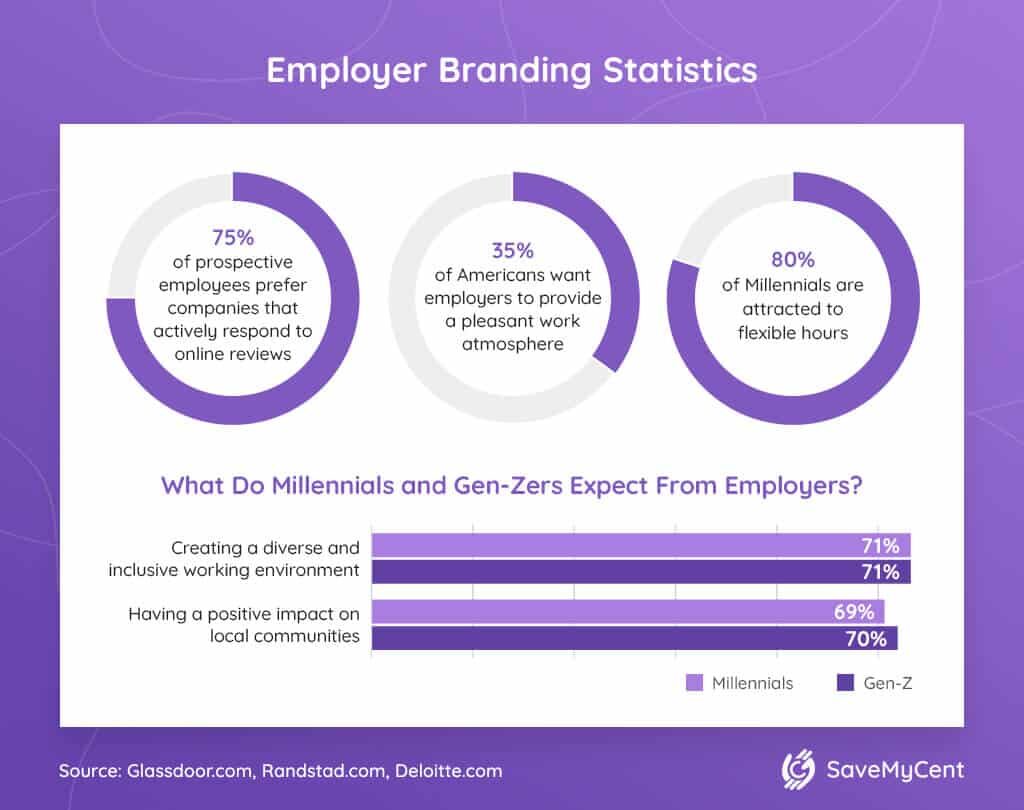
9. 75% of prospective employees prefer companies that actively respond to online reviews.
(Glassdoor)
Employer brand statistics show job seekers are more likely to apply for positions at businesses that take care of their online reputation, answer complaints politely and constructively, and share updates on the company culture. As the average job searcher reads at least five reviews of a company before forming an opinion, online reputation is crucial for attracting talent.
On the other hand, branding facts reveal that finding balance is vital. Untruthful, overly positive reviews can lead to unrealistic expectations and damage the company’s employee retention.
10. 35% of Americans want employers to provide a pleasant work atmosphere.
(Randstad)
A good salary is a key consideration for 56% of US job seekers, while 45% also look for positions that allow them to establish a healthy work-life balance. Unsurprisingly, job security is a crucial factor for 43% of prospective employees. To attract top talent, companies need to make positive workplace culture an essential part of their digital branding, statistics suggest. One way to achieve this is by posting behind-the-scenes videos and employee testimonials.
11. 80% of millennials are attracted to flexible hours.
(Randstad)
Flexible working hours are either the most popular or the second most popular benefit in Europe, North America, and Latin America. Additional vacation and healthcare benefits also made the list. Along with job security and positive office culture, these are the most crucial aspects of good employer branding for young job seekers worldwide.
12. 71% of millennials and Gen-Zers prefer diverse work environments.
(Deloitte)
Statistics on branding suggest companies can attract millennials and Gen-Zers by creating inclusive and diverse environments, motivating employees, and stimulating their creativity. Employee satisfaction and economic performance are also among the top considerations.
13. 69% of millennials and 70% of Gen-Zers research brands’ impact on local communities.
(Deloitte)
Besides looking at what companies provide to their employees, younger generations care about their employers’ impact on the community. These young people also monitor companies’ efforts to reduce or limit their environmental impact. As such, businesses need to adopt eco-friendly practices and — just as importantly — include them in their brand messaging.
B2B Branding Statistics
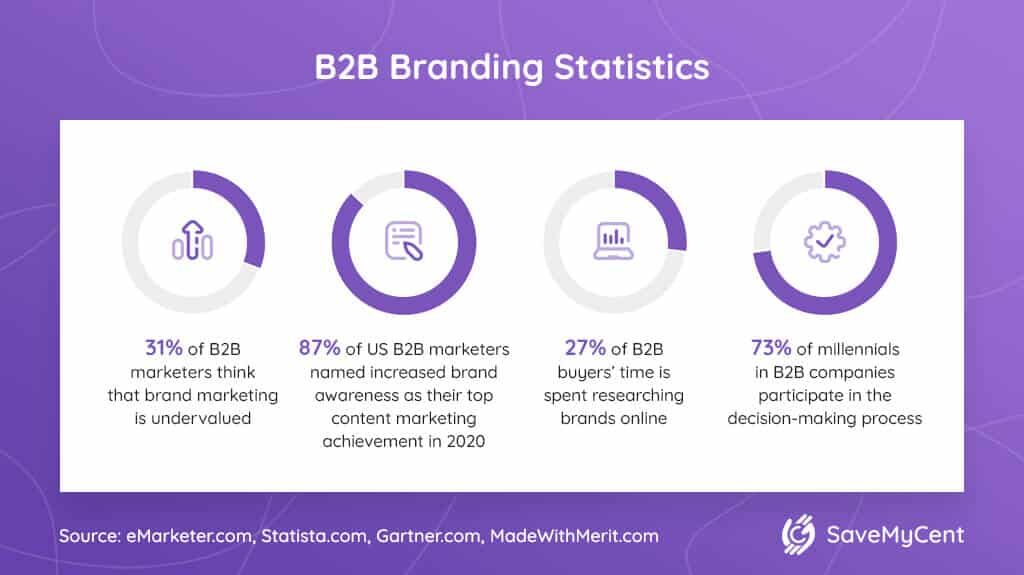
14. 31% of B2B marketers think that brand marketing is undervalued.
(eMarketer)
A key reason why it’s challenging to establish brand identity, according to statistics, is the lack of strict and uniform brand guidelines. Other factors include a lack of clear communication to internal stakeholders and problems with ensuring brand standards.
15. 87% of US B2B marketers named increased brand awareness as their top content marketing achievement in 2020.
(Statista)
Content marketing is a highly effective method of creating brand awareness, statistics show. In 2020, it also proved effective at building trust, educating audiences, and generating demand.
16. B2B buyers spend 27% of their time researching brands online.
(Gartner)
Social media is excellent for raising brand awareness, and statistics suggest the same applies to B2B brands. Apart from social media platforms like LinkedIn, B2B brands need to strengthen their internet presence via their official websites and other specialized industry sites. With so many buyers conducting online research, B2B branding is a requirement and not an option.
17. 73% of millennials in B2B companies participate in the decision-making process.
(Merit Marketing)
Furthermore, 80% of millennials say they would rather buy from the more environmentally or socially involved company when presented with two otherwise similar offers. For this reason, a successful B2B branding strategy must include causes millennials find important.
Personal Branding Statistics for 2022
18. It takes one-tenth of a second to create a first impression.
(Association for Psychological Science)
This might be one of the scariest personal branding facts. Princeton experiments showed that we form impressions of strangers very quickly based only on their faces and facial expressions. Apart from attractiveness, we also subconsciously try to decide on the person’s trustworthiness. Seeing as people form opinions so fast, clear and concise messaging is a must.
19. People are 16 times more likely to read a post by a friend than by a brand.
(Sprout Social)
People prefer personal communication with other people over impersonal exchanges with a company — and brands can use this to their advantage. Namely, posts shared by employees have a 1,590% better reach than those shared by the brand itself. This is one of the most significant benefits of employee advocacy for branding, according to statistics.
20. If the CEO uses social media, people are 77% more likely to buy from a company.
(Forbes)
Personal branding is crucial for employees as well as CEOs. That’s because people are more likely to purchase from a company if the CEO uses social media. But there’s a catch — if, for some reason, people dislike the CEO’s personal brand, it can affect the sales negatively.
21. 58% of consumers say a brand’s regular customer is also its most trustworthy spokesperson.
(Edelman)
Creating trust is one of the main benefits of branding. Apart from friends and family members, people also believe what regular consumers say about a brand. Building a community of loyal customers who advocate for the company is thus among the top branding achievements.
22. 90% of employers review job applicants’ social media accounts.
(The Manifest)
If you can take only one of these personal branding statistics with you, this should be it. Leave the truly fun pictures on private mode, and don’t get overly personal on your public profiles. Apparently, 79% of HR pros have eliminated candidates for inappropriate social media content.
Logo Statistics
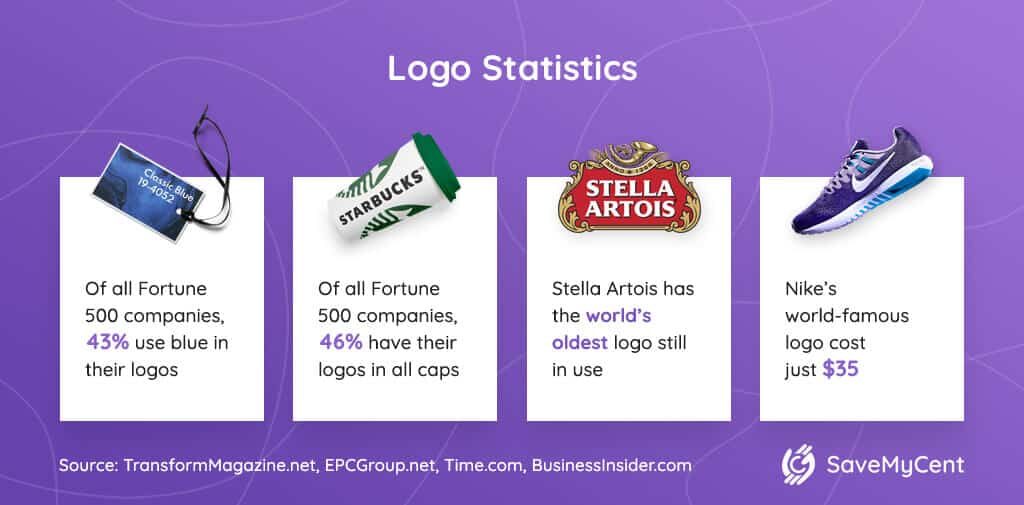
23. Of all Fortune 500 companies, 43% use blue in their logos.
(Transform Magazine, Canva)
Blue is associated with trust, stability, and confidence. It’s no wonder then that companies like Walmart, McKesson, and United Health Group feature the color prominently in their logos. The second most popular logo color is red, commonly used by food and beverage brands.
24. 46% of all Fortune 500 companies have their logos in all caps.
(EPC Group)
All lowercase logos are the least common, with only 7% of the top 500 US companies using them. Logo-related branding facts reveal that 75% of these companies use only sans serif fonts in their logos. Another 19% exclusively use serif fonts, while the remaining 6% combine the two.
25. Stella Artois has the world’s oldest logo still in use.
(Time)
The Den Hoorn (“hoorn” meaning “horn” in English) brewery was founded in Leuven, Belgium, in 1366. Although the famous horn on the logo hasn’t changed for more than 650 years, both “Artois” and “Stella” were added later. When Sebastian Artois purchased the brewery in 1708, he added his last name to the logo. The word “Stella” (Latin for “star”) was incorporated during the Christmas season of 1926 to promote the company’s seasonal beer, the Christmas Star.
26. Nike’s world-famous logo cost just $35.
(Business Insider)
One of the most interesting facts about branding — money doesn’t always equal success. Sure, some logos cost millions to redo, like the BBC’s $1.8 million redesign in 1997. But many were bought for the price of a meal at a fast-food restaurant, like Twitter’s $15 original logo. Another famous logo we see every day was made in-house for nothing but some extra time — Google.
Facts About Branding: Why Does It Matter?
Constant exposure to various marketing messages has forced people to use ad blockers and the fast-forward button. But this doesn’t mean a well-thought-out message can’t reach them. A carefully crafted and curated brand with a good story will surely boost your company’s visibility.
At the same time, understanding branding can help you create a better website and use the power of social media to your advantage. Remember — branding is about bringing the right message to the right people, whether they’re future employees or potential customers.
FAQ
What are the 4 steps of branding?
The four steps of branding are as follows:
- Determining the core message of your business
- Getting to know your audience
- Spreading brand awareness
- Tracking brand growth
All these steps require research and testing the response of your audiences.
What are 3 branding strategies?
The three strategies include multi-product branding, multi-branding, and private branding.
First, there’s multi-product branding or corporate branding. It refers to using one name for all or most products or product lines. The second — multi-branding — is often seen in the automotive industry, where each car is made for a different market and is a separate brand. Finally, private branding is common in store brands, where goods are manufactured and branded for a reseller.
What is the main purpose of branding?
The main purpose of branding is to differentiate your business from other similar companies and find an audience for your product. Creating brand awareness is another essential goal that ensures people always associate your brand with the type of product or service you offer.
What does branding mean?
Branding is the intentional crafting of a set of emotions and perceptions about your company or business. All means of your brand’s visual and verbal representation — your logo, website, promotional materials, social media profiles, texts, and posts — need to convey this set as clearly and consistently as possible. Brand consistency is critical, as branding statistics show it could help increase your revenue by up to 33%.
Sources:
- ActiveCampaign
- Association for Psychological Science
- Better Business Bureau
- Business Insider
- Canva
- Deloitte
- Edelman
- Edelman
- eMarketer
- EPC Group
- Forbes
- Forbes
- Gartner
- Glassdoor
- Lucidpress
- Mad Marketing
- The Manifest
- Merit Marketing
- Pam Moore
- Randstad
- Sprout Social
- Stackla
- Statista
- Statista
- Statista
- Tailor Brands
- Time
- Transform Magazine

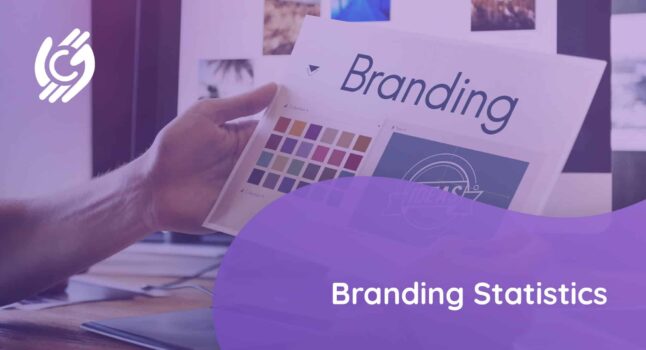


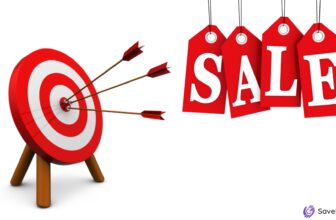


![How to Get Free Clothes From Shein? [2024 Guide]](https://savemycent.com/wp-content/uploads/2023/09/How-to-Get-Free-Clothes-From-Shein-336x220.png)
